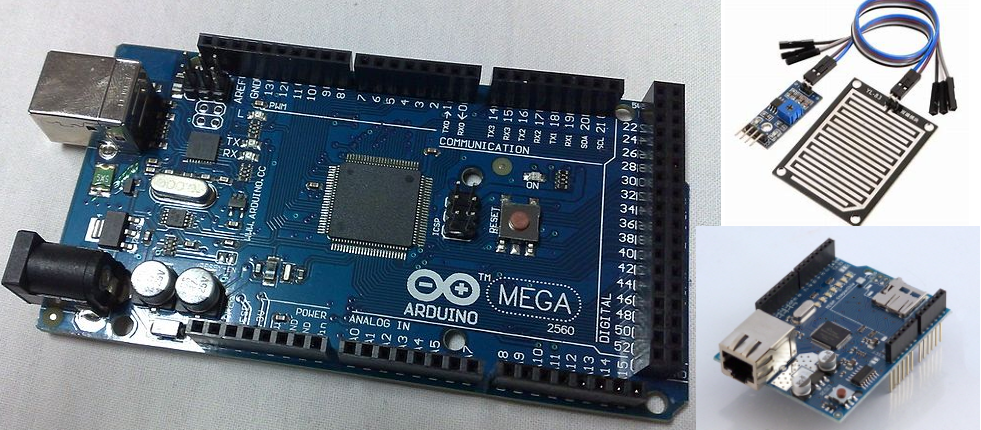Irrigation Control Via Internet + Arduino + Ethernet
The project integrates Arduino Mega 2560 and a Wiznet W5100 Ethernet shield for web-based irrigation control, focusing on efficient horticulture.

Software Apps and online services
Enhancing Horticulture with IoT: A Case Study on Smart Irrigation Control
In the ever-evolving field of horticulture, the integration of technology has opened new avenues for optimizing resource use and improving plant care. A standout example of this fusion between agriculture and technology is the development of a smart irrigation control system, enabled by WIZnet's robust Ethernet solutions. This project, realized over the holiday season, represents a significant leap towards creating sustainable and efficient horticultural practices through the Internet of Things (IoT).
Project Overview
The smart irrigation system was designed with the primary goal of enhancing the sale and cultivation of a wide range of horticultural products, including plants, trees, and flowers. By leveraging the power of IoT, the system provides precise control over irrigation, temperature regulation, and environmental monitoring, all through a user-friendly web interface.
Core Components.
Arduino Mega 2560: Chosen for its ample memory and numerous pins, the Arduino Mega 2560 serves as the project's control center.
WIZnet W5100 Ethernet Shield: Facilitates seamless Internet connectivity, enabling remote monitoring and control.
FC37 Analog Water Detection Sensor: Detects rain levels to adjust irrigation schedules accordingly.
DS18B20 Temperature Sensor: Monitors temperature within the greenhouse, ensuring optimal conditions for plant growth.
Relays and Solenoids: Control water flow to the irrigation system, allowing for precise watering schedules.
Key Features and Functionality
Environmental Monitoring: Real-time tracking of temperature and rain levels to inform irrigation decisions.
Temperature Regulation: Automated heating and cooling controls, based on preset thresholds, ensure ideal conditions for plant growth.
Smart Irrigation: Allows for scheduling and on-demand irrigation, factoring in current weather conditions to avoid water wastage.
Remote Management: Features a remote reboot option and a login system for secure access.
Data Logging and Analysis: Captures temperature data and irrigation activity, presenting them in intuitive graphs for easy analysis.
System Design and Operation
The system's architecture is straightforward yet effective. The Arduino Mega 2560, equipped with the WIZnet W5100 Ethernet Shield, collects data from the temperature and rain sensors. This data is then sent to a web server, where PHP scripts process the information and update the system's outputs accordingly. The result is a highly responsive system that can adjust irrigation and temperature controls within seconds, based on the latest environmental readings.
One of the project's highlights is its ability to operate efficiently without overburdening the microcontroller. By offloading data processing to the server side, the system ensures that the Arduino board remains unencumbered, leading to reliable operation even in complex scenarios. The inclusion of a watchdog timer further enhances system stability by automatically resetting the Arduino in the event of a malfunction.
Practical Benefits and Impact
The implementation of this WIZnet-enabled smart irrigation system offers numerous benefits for horticulture enthusiasts and professionals alike. By automating critical aspects of plant care, such as irrigation and temperature control, the system not only saves time but also significantly reduces water and energy consumption. Moreover, the ability to remotely monitor and adjust system settings ensures that optimal conditions are maintained, even in the user's absence.
For horticulture businesses, the implications are profound. Enhanced plant growth, reduced resource waste, and improved operational efficiency can lead to higher yields and profitability. Additionally, the system's scalability and flexibility make it suitable for a wide range of applications, from small home gardens to large commercial greenhouses.
Conclusion
The integration of WIZnet's Ethernet technology into the realm of smart irrigation exemplifies the potential of IoT to revolutionize traditional industries. This project not only showcases the technical feasibility of such integrations but also highlights the tangible benefits they can bring to horticulture. As technology continues to advance, the possibilities for further innovations in agricultural practices are boundless, promising a future where technology and nature coexist in harmony for mutual benefit.



